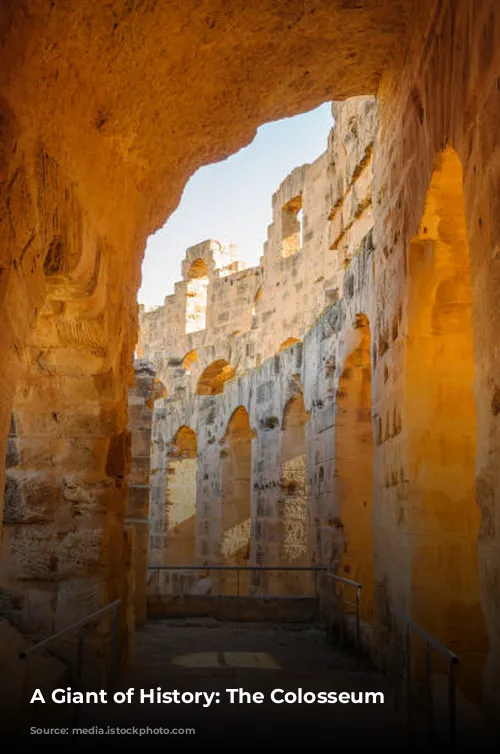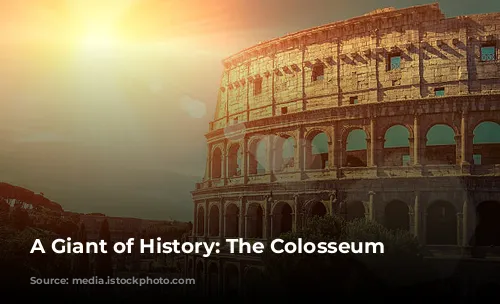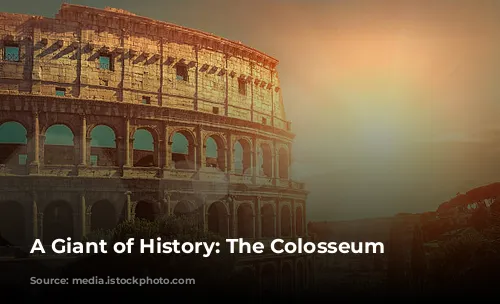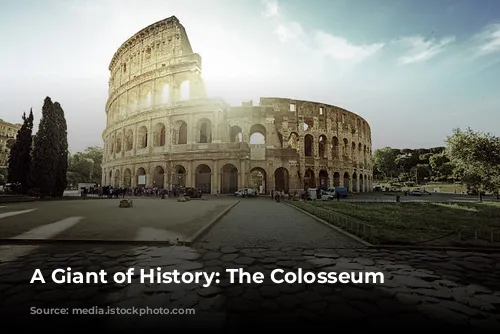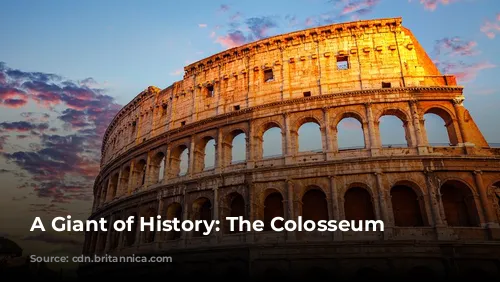The Colosseum stands as a powerful symbol of ancient Rome’s architectural and engineering mastery. It’s not just a historical relic; it’s a vital source of revenue for modern-day Italy, attracting millions of tourists each year. In 2018 alone, the Colosseum, Roman Forum, and Palatine Hill combined generated over €53.8 million, making them the most popular tourist destination in the entire country.
This paragraph introduces the Colosseum and highlights its importance as a historical landmark and a major source of tourism revenue.
From Glory to Neglect, and Back Again
The Colosseum’s journey has been a rollercoaster of fortunes. After the fall of the Western Roman Empire, it fell into a state of severe disrepair. For centuries, the arena was repurposed, first as a fortress by powerful families and later as a quarry, its valuable materials plundered for other projects. It wasn’t until the 1990s that state-funded restoration efforts brought the Colosseum back from the brink of ruin, reviving its former glory.
This paragraph details the Colosseum’s decline after the fall of the Roman Empire and its eventual restoration in modern times.
A Monument to Power and Spectacle
The Colosseum was conceived as a grand project, born out of the emperor Vespasian’s desire to revitalize Rome after the tumultuous year of the four emperors. Inspired by other amphitheaters, Vespasian envisioned the Colosseum as a breathtaking venue for public entertainment. Gladiatorial combats, thrilling hunts, and even simulated naval battles enthralled the crowds, showcasing the power and spectacle of ancient Rome.
This paragraph focuses on the origins of the Colosseum, explaining its purpose as a venue for public entertainment during the Roman Empire.

A Legacy Forged in Stone and Blood
Construction of the Colosseum commenced under Vespasian’s reign, between 70 and 72 CE. His son and successor, Titus, dedicated the completed structure in 80 CE, marking a pivotal moment in Roman history. The fourth story was added by the emperor Domitian in 82 CE. The Colosseum’s construction was a testament to the vast wealth of the Roman Empire, funded with spoils from the sack of Jerusalem in 70 CE and built by Jewish slaves.
This paragraph details the construction of the Colosseum, highlighting the roles of emperors Vespasian, Titus, and Domitian, and emphasizing the use of slave labor and plundered wealth in its construction.
A Colossal Masterpiece of Architecture and Engineering
The Colosseum is a magnificent example of Roman engineering. It is an elliptical structure, standing four stories tall, and made of stone, concrete, and tuff. It is an impressive feat of architecture, spanning 620 by 513 feet and capable of accommodating as many as 50,000 spectators. The Colosseum was not just a massive structure; it was a place of entertainment, most famously known for its gladiatorial combats.
This paragraph describes the Colosseum’s architectural and engineering features, highlighting its impressive size and capacity, and its association with gladiatorial combat.
From Nero’s Palace to a Public Arena
The Colosseum stands on the former site of Nero’s lavish Golden House. The artificial lake that served as the centerpiece of Nero’s palace was drained, and the Colosseum was built in its place. This decision was as much a symbolic gesture as a practical one. Vespasian, who rose to power from relatively humble beginnings, chose to replace the tyrannical Nero’s private lake with a public amphitheater, demonstrating his commitment to the Roman people and their entertainment.
This paragraph details the location of the Colosseum, its symbolic significance, and the contrast between Nero’s opulent palace and Vespasian’s public arena.

A Triumph of Design and Innovation
Unlike earlier amphitheaters, which were often carved into hillsides for support, the Colosseum is a freestanding structure of stone and concrete. The Colosseum’s unique construction utilizes a complex system of barrel vaults and groin vaults, creating a majestic architectural spectacle. Its three lower stories are adorned with arcades framed by engaged columns in the Doric, Ionic, and Corinthian orders. The Colosseum’s rising arrangement of columns became the basis of the Renaissance codification known as the assemblage of orders. The primary structural framework and exterior facade are made of travertine, while volcanic tufa forms the secondary walls. Concrete was used for the inner bowl and arcade vaults.
This paragraph further explores the Colosseum’s unique architectural design, contrasting it with earlier amphitheaters and highlighting its innovative features like the use of vaults and the arrangement of columns.
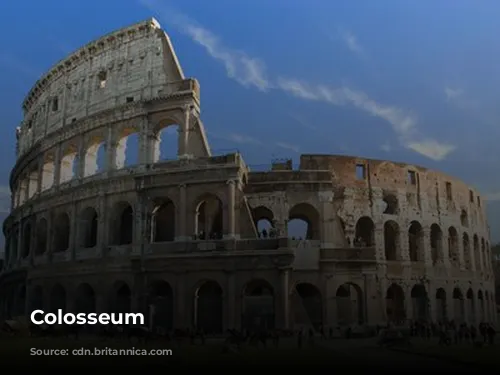
A Stage for Spectacle and Symbolism
The Colosseum was designed to accommodate a massive audience, seating up to 50,000 spectators. To protect them from the scorching sun, a massive retractable awning called a velarium was used. This intricate system required hundreds of Roman sailors to manipulate its rigging. The Colosseum witnessed a multitude of events, from gladiatorial combat and animal hunts to elaborate mock naval battles, cementing its place as a symbol of Roman power and spectacle. However, there is no conclusive evidence to support the popular belief that it was also the site of early Christian martyrdoms.
This paragraph focuses on the Colosseum’s practical features like its seating capacity and the use of a retractable awning. It also discusses the various events that took place within its walls and addresses the popular belief about Christian martyrdoms.
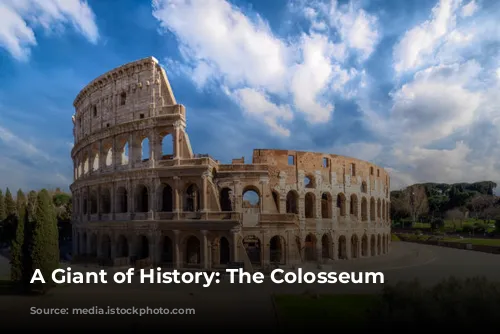
From Arena to Fortress, to Quarry, to Monument
Throughout the centuries, the Colosseum has served various purposes. After the fall of the Roman Empire, it was repurposed as a church and later used as a fortress by the Frangipane and Annibaldi families. The Colosseum suffered damage from lightning, earthquakes, vandalism, and pollution, leading to the disappearance of its marble seats and decorative materials. For over a thousand years, the site was treated as a quarry, its valuable materials plundered for other projects. Fortunately, preservation efforts began in the 19th century, and a significant restoration project was undertaken in the 1990s.
This paragraph explores the Colosseum’s evolution through different periods, from its use as a fortress and quarry to its eventual preservation and restoration.
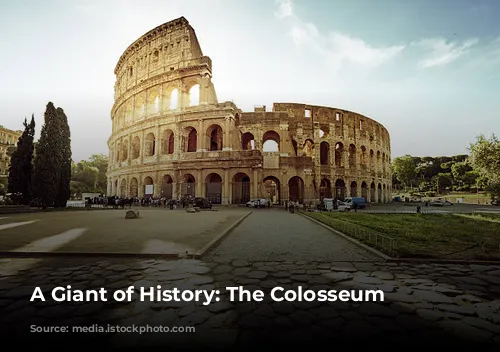
A Timeless Symbol of Ancient Rome
The Colosseum remains one of Rome’s most popular tourist attractions, welcoming close to seven million visitors annually. Today, the Colosseum stands as a symbol of ancient Rome’s grandeur, resilience, and lasting legacy. It is a reminder of a bygone era, of the ingenuity of Roman engineers, and the enduring power of human creativity. Regularly changing exhibitions showcasing the culture of ancient Rome are held within the Colosseum, offering visitors a glimpse into the vibrant and complex world of ancient Rome.
This paragraph emphasizes the Colosseum’s enduring legacy as a major tourist attraction and a symbol of ancient Rome. It also highlights the ongoing efforts to bring the Colosseum to life through exhibitions and educational programs.
